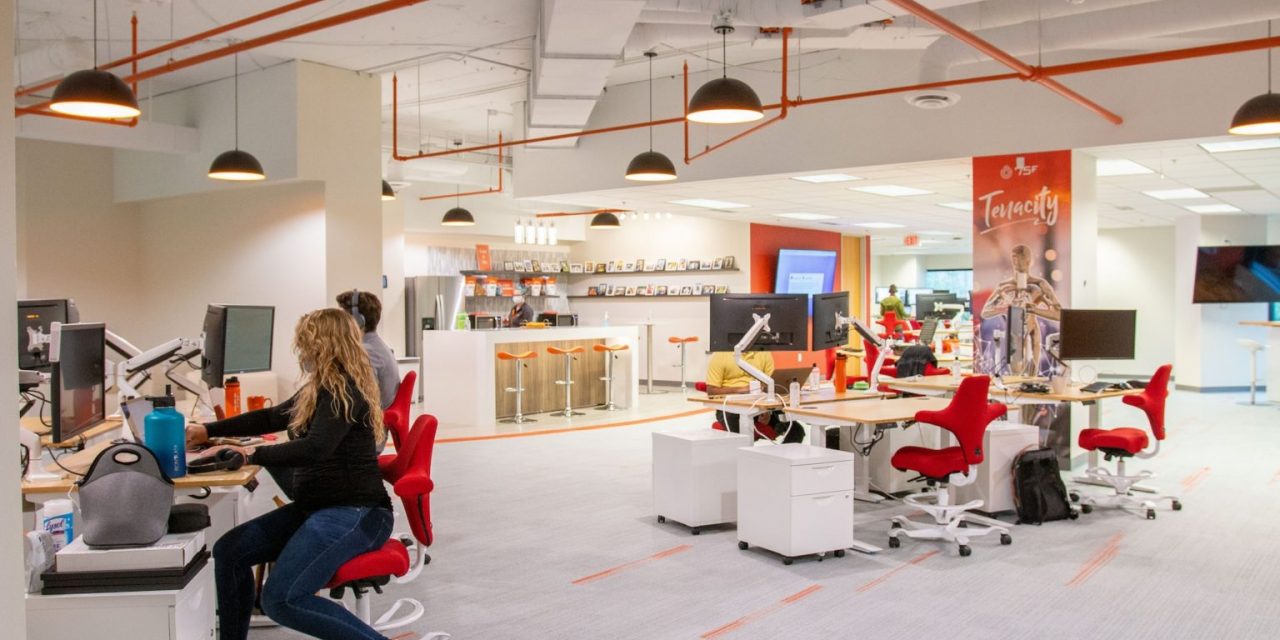New research shows that the Covid-19 pandemic has had a significant impact on contemporary office design, such as the stagnation of office size.
In its ‘The Offices of the Future’ report, digital construction, real estate and facilities management platform PlanRadar shows that the increase in remote and hybrid working has caused businesses and operators to maintain or even decrease their office space.
The majority of respondents to the survey, which provides a snapshot of the global office specification and commercial fit-out sector from 12 countries around the world, expect the workplace to remain at pre-pandemic size or shrink.
The rise of the remote and semi-remote worker means that:
- More than 50% of professionals in the US now work remotely;
- Almost 40% in the UK; and
- More than 20% in the majority of other countries analysed.
All respondents predicted the remote working trend to continue, except for those in Spain who thought there’d be a decline numbers of those working remotely.
The result, the report states, is businesses considering how “this emerging attitude can play to their commercial advantage, downsizing space and improving staff’s at-home capabilities. Savings made can then be allocated to growing digital, or other operational requirements”.
Co-working spaces have increased in number in the last two years, PlanRadar reveals, “with the UK now hosting over 6,000 of them” and more than 42 different countries offering “digital visas, encouraging the further take up of remote working”. This increase has been most notable in suburban and rural areas, “reflecting the mass urban exodus of many professionals during the pandemic”.
Purposeful design
What has long been touted by many in the workplace and facilities management sector as the preferred purpose of the workplace has been confirmed in the ‘Office of the Future’ report: workplaces are best used for “specific, predominantly social, collaborative activities, fostering team culture or for face-to-face client meetings”.
Design trends, the report reveals, include:
- Growing interest in flexible spaces around the world;
- Increased desire for moveable partitions, modular meeting pods and lightweight furniture to adapt to daily occupancy fluctuations and business requirements;
- Prioritising sustainable design that supports users’ wellbeing, with focus on hygiene and eco-friendliness;
- Increased demand for bacteria-resistant design elements such as non-porous surfacing, better ventilation, biophilic features and low-carbon interiors.
Ibrahim Imam, Co-CEO of PlanRadar says: “Whilst the world was tentatively moving towards a more hybrid or fully-remote model in 2019, the Pandemic acted as the catalyst to transform both employer and employee attitudes towards the physical workspace. Now these assets are less regarded as places to show up at day-to-day and have changed purpose, becoming locations where ideas are shared and developed in a collaborative environment. We´re seeing the development of a more flexible and productive professional landscape.”
Co-CEO Sander van Rijt adds, “Despite the change, there are plenty of opportunities for office specifiers and developers, evidenced in the growth of co-working spaces in rural and suburban areas. Equally there is massive retrofit potential for existing spaces which need to adapt to the new norm. It’s a different market now, but also an exciting one.”
Source: https://www.facilitatemagazine.com/content/news/2022/10/31/how-covid-has-affected-office-design


